This is a drawing showing another form of motions in a planets interior.
Click on image for full size
Motions in Saturn's Interior, part 2
Motions, or currents in the interior of a gas-giant planet such as Saturn may be very different from the motions typical of the earth's interior.
A second idea for the motions in the interior of a gas-giant planet is shown in this picture. Strong heat coming from within a planet can cause this kind of motion to take place. The drawing shows layered cylinders of material, in motion, rolling in different directions. It is thought that this pattern may be in operation because the tips of the cylinders may match up with the striped pattern of clouds seen in the atmosphere.
It is not known which of these two kinds of motion, one typical of the earth, and one like this, prevails in the interior of Saturn.
You might also be interested in:
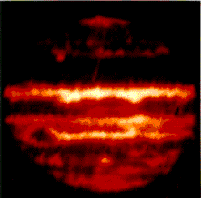
The energy that Jupiter and Saturn make has been found be very high. There are several ways in which astronomical objects make energy from inside. The first is by thermonuclear fusion, the way a star makes
...more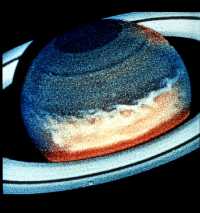
This image of Saturn makes use of false color to show the cloud pattern. The clouds form in bands which move across the disk of Saturn. The banded pattern of clouds, or stripes, is similar to those found
...more
Motions in the interior of a planet help carry heat from the inside to the outside. The drawing to the left illustrates a kind of global motion that is typical of motions in the atmosphere as well as interior
...more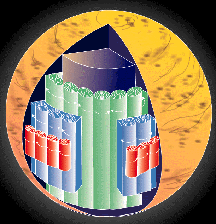
Motions, or currents in the interior of a gas-giant planet such as Saturn may be very different from the motions typical of the earth's interior. A second idea for the motions in the interior of a gas-giant
...more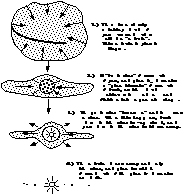
Scientists think that the solar system formed out of a spinning cloud of hydrogen and helium gas. Because the cloud was spinning, it flattened into a frisbee shape, just like a ball of pizza dough becomes
...more
Magnetospheres are generated with 1.) magnetic materials and 2.) with motions within the magnetic material. The Earth-like planets generate magnetospheres from iron at the center. But Saturn has almost
...more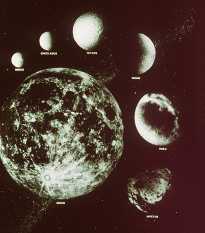
This is an image of the Earth's moon, shown in the lower left, with the much smaller icy moons of Saturn. The moons in order, starting from the top left are: Mimas, Enceladus, Tethys, Dione, Rhea, and
...more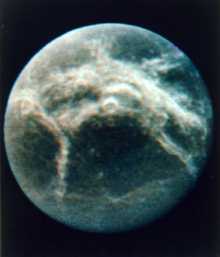
Dione was discovered by G. Cassini in 1684. Dione is the 7th farthest moon from Saturn, with a standoff distance of 377,400 km. It is a small icy moon, lightly cratered, with wispy white streaks across
...more













